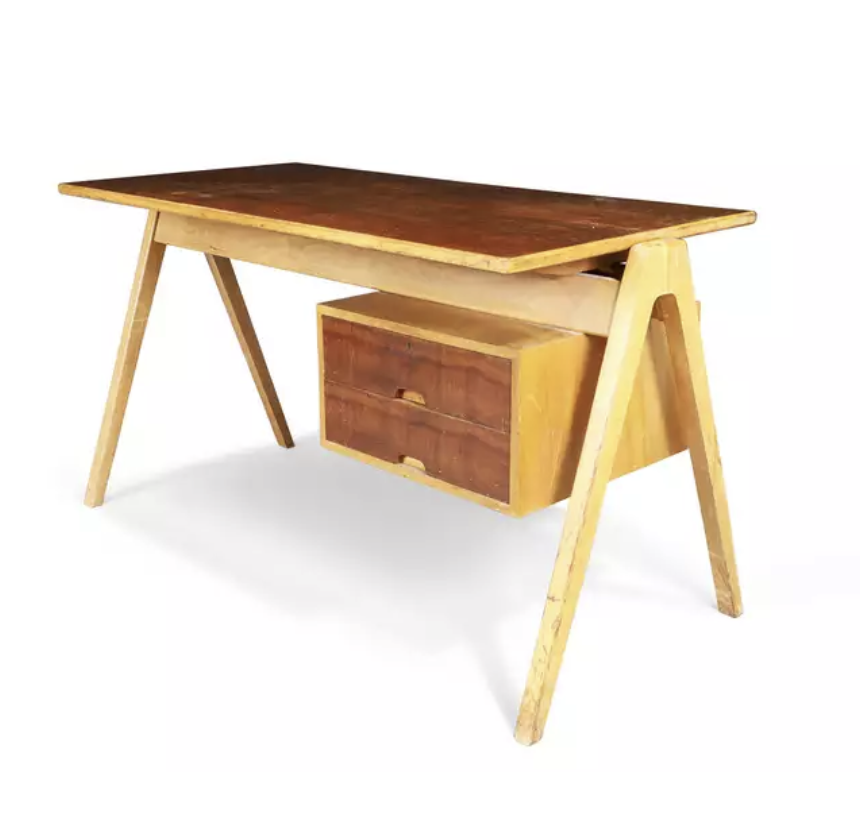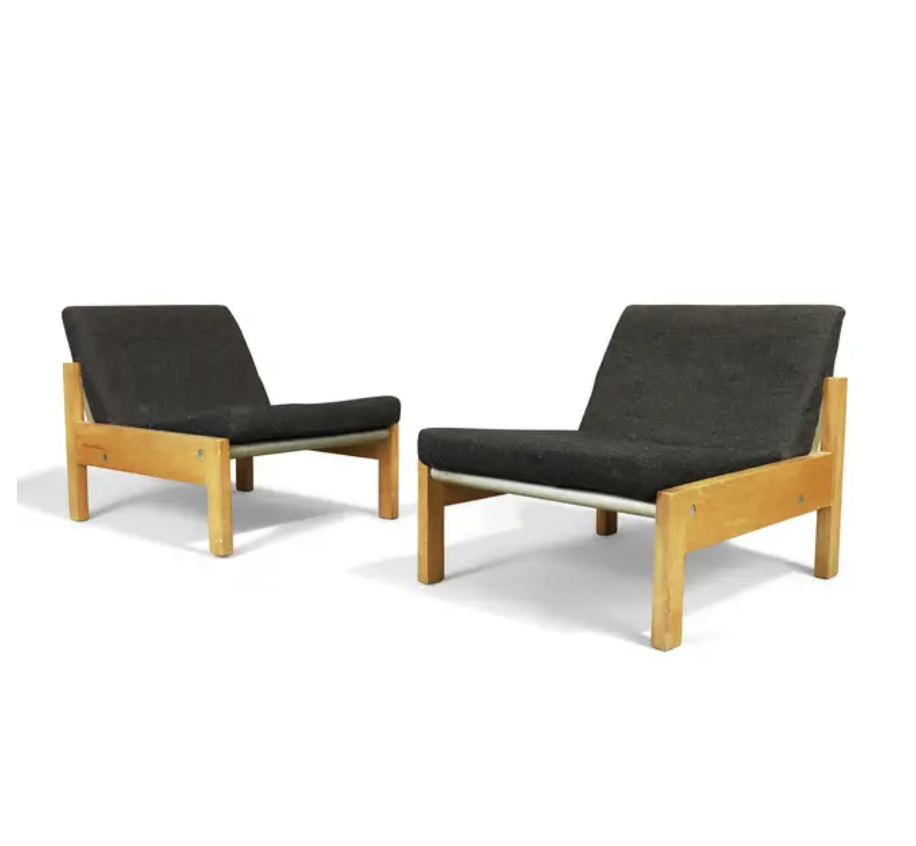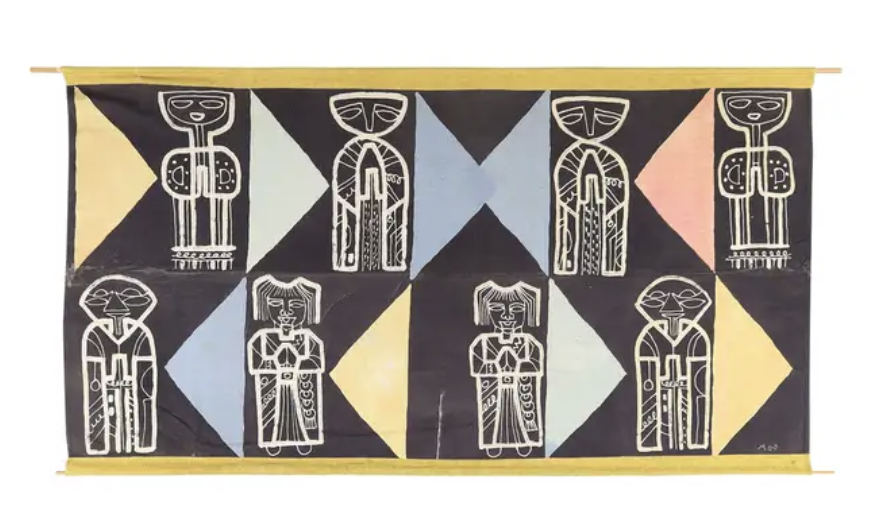After World War II, a bold new Design movement emerged in Britain that challenged the traditional status quo. Referred to at the time as ‘Contemporary style’, this movement would shake up the establishment and further cement the importance of Modernism in 20th-Century Art and Design.
In the immediate post war years, shortages and constraints on raw materials gave birth to a new austerity in Design, with designers rejecting traditional ideas of ornamentation and instead espousing more simplified utilitarian forms. Simultaneously, comparable ideologies were being explored in the visual arts by figures such as Ben Nicholson and Barbara Hepworth, whose work leant heavily towards abstraction, with a focus on naturalistic forms and shapes. Talented young British architects emerged, who, in the aftermath of war and under a newly elected government, were given the means to realise new towns and large scale social housing projects. By 1951, a feeling of hope, optimism, and regeneration culminated in the Festival of Britain.
Lot 86: Robin Day for Hille of London, 'Hillestak' desk, circa 1952
The Festival of Britain was a state-sponsored nationwide exhibition, which showcased the latest developments in design, technology, architecture, science, and the arts, offering a vision of the bright future to come. The festival was pivotal in introducing the wider public to the new approaches of artists and designers such as John Piper, Eduardo Paolozzi, Victor Passmore, Lynn Chadwick, Hans Coper, and Lucie Rie, to name but a few.
Lot 87: Ernest Race, Pair of scarce 'Curlew' lounge chairs, circa 1962
Industrial designers such as Ernest Race, Basil Spence and Robin Day were all commissioned to design furniture for various pavilions as well as the newly built Royal Festival Hall. The now highly sought after and scarce Model ‘658’ chair by Robin Day used pioneering techniques, incorporating a copper rod frame and floating moulded plywood backrest.
Lot 85: Michael O'Connell, Wall Hanging, circa 1950/60
Lucienne Day, arguably one of the most important and influential textile designers of the 20th Century, introduced several of her bold and vibrant designs at the Festival, including her now ubiquitous ‘Calyx’ Pattern produced by Heal’s. Michael O’Connell created a vast 56m x 4m wax resist wall hanging depicting stylised scenes of Kent for the Country Pavilion.
The Festival of Britain ran for five months and was a huge success, with attendance figures estimated in the millions. Many of the exhibitors are now considered to be amongst the most important exponents of 20th-Century Modernism, with their works commanding huge sums at auction. With the Festival of Britain, the ‘Contemporary Style’ had arrived to shape 1950s Britain, with modernity embraced by a new generation of British society.







